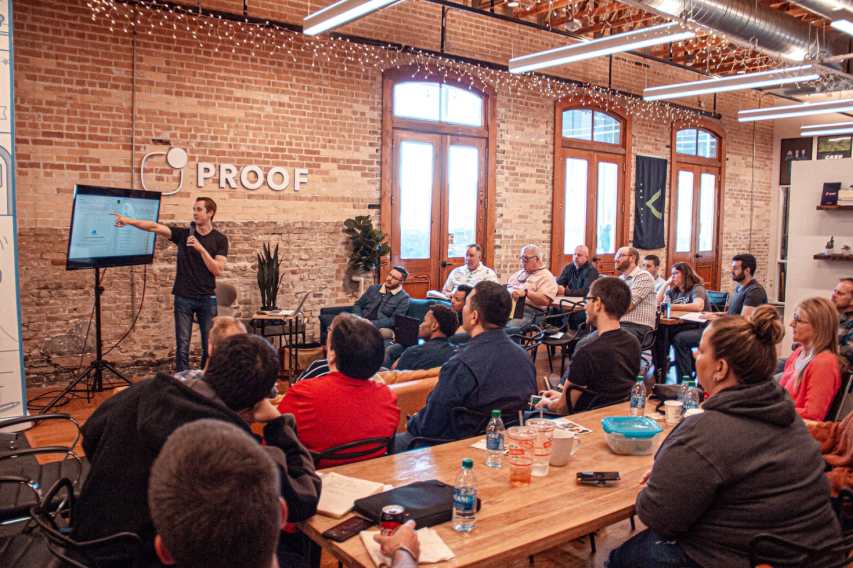Every day, founders launch hundreds of products on sites like Product Hunt, BetaList, and other product discovery platforms. They get the usual launch buzz—upvotes, congratulatory tweets, a burst of traffic, maybe even a feature in a few press mentions.
For a few days, it feels like everything is working. Then week two arrives.
The traffic dries up. Signups slow. The excitement fades.
And the reality sets in: launching is easy. Sustaining is not, and getting paying customers is harder.

Introduction: What Happens After the Launch High Wears Off?
What happened?
Most founders build too early. They skip validation, code before listening, and obsess over features instead of pain points. When the hype fades, they’re left with a product that no one needs, no one pays for, and no one misses.
If you’re serious about building something that sticks—something that users need, want, and keep coming back to—there are hard questions you need to ask before you build anything.
This article is not about inspiration. It’s about interrogation.
What follows are 30 hard questions every founder must answer—honestly—before building, launching, or raising a dollar. These questions won’t just shape your product. They’ll shape whether your product should exist in the first place.
Section 1: Problem Validation — Are You Solving a Real Pain or Just Building for Fun?
Most failed startups don’t die from a lack of ambition or poor execution.
They die because the founder built something no one really needed.
It’s a common pattern: a founder has a “cool” idea, whips up an MVP, and ships it. But no one uses it—or worse, people try it once and never come back. The issue? They built a product without validating a real problem.
If you want traction that lasts beyond launch week, you need to get painfully clear on one thing: what problem are you solving, and for whom?
1. Who is your actual target customer—and what specific pain are they experiencing?
You can’t build for “everyone.” You have to zero in on a real persona with real problems.
For example, say you’re building a meal-prep app. Is it for busy professionals who don’t have time to cook, or fitness enthusiasts tracking macros? Both groups eat, but their motivations, behaviors, and needs are entirely different. A product that tries to please both usually ends up pleasing no one.
Airbnb didn’t try to serve “travelers.” It solved a specific pain:
For guests, hotels were expensive and uninspiring.
For hosts, they needed extra income.
Clarity like that shapes everything—design, pricing, messaging, and marketing.
2. What are they currently doing to solve the problem—and where are they frustrated?
If your target users aren’t already hacking together solutions—using spreadsheets, duct-taping tools, or complaining in Reddit threads—they may not care enough to switch.
Dropbox is a classic case. It didn’t invent file storage. But in a world of email attachments and thumb drives, it made syncing files so effortless that people felt like they couldn’t live without it.
Look for that kind of friction. It’s where opportunity lives.
3. How frequently do they feel this pain—and how urgently do they want it solved?
A problem someone faces once a year isn’t a business. A problem they feel daily or weekly? That’s a signal.
Urgency isn’t measured by how interesting a problem sounds—it’s measured by how badly someone wants a solution right now.
If your product saves someone time, money, or frustration every week, they’re more likely to pay for it and recommend it.
4. Have you spoken to at least 20 people who experience this problem?
No, a Twitter poll doesn’t count. Nor does a “DM me if interested” post. You need direct conversations. Listen to how people describe the pain in their own words. Ask follow-up questions. Watch how they currently solve it.
This isn’t about selling—it’s about listening. And it’s the single most important step most founders skip.
Tip: Ask open-ended questions like, “Walk me through how you currently handle X,” and, “What’s the most annoying part of that process?” Let them talk.
5. What’s the moment of pain that makes them say, “There has to be a better way”?
That’s your wedge. That’s what your product must speak to immediately.
Calendly didn’t market itself as “a scheduling solution.” It simply said: Tired of back-and-forth emails?
That moment—“What time works for you?” followed by 6 emails—is what it solved.
Find that moment for your customer. Then build around it.
Bottom line:
If you can’t clearly articulate who your product is for, what problem it solves, and why people are desperate for it, you’re building blind. Skip this step, and no growth hack or feature update will save you later.
Section 2: Market Demand & Viability — Are There Enough People Who Need This (and Can You Reach Them)?

Even if you’re solving a real problem, your startup can still fail if the market is too small, or worse, unreachable.
Many founders overestimate demand. A few nods from friends or beta users can create a false sense of momentum. But unless a meaningful number of people are actively struggling with the problem you’re solving—and you can find and reach them—your product will never scale.
6. Is the market large enough to justify building this?
You don’t need to build the next Amazon. But you do need a sizable audience.
Start by estimating your Total Addressable Market (TAM), then narrow it down:
TAM: Everyone who could benefit from your product.
SAM: The segment you can realistically serve today.
SOM: The subset you can actually reach and convert in the short term.
For instance, a niche like vegan pet food might feel promising. But if only a tiny fraction of pet owners are vegan—and they’re spread across the globe—customer acquisition becomes both expensive and slow.
In contrast, Tesla succeeded not by appealing to “everyone who wants a car,” but by targeting early adopters in wealthy markets who cared about performance and sustainability.
Clarity about your market size doesn’t just help you focus—it also prevents you from building a product that can’t grow.
7. Are people actively looking for a solution?
Real demand reveals itself in behavior. If people are searching for answers, complaining on Reddit, cobbling together workarounds, or trying other tools, that’s a green light.
If no one’s asking questions, seeking fixes, or visibly frustrated, you might be solving a problem that’s not top of mind.
Use tools like:
Google Trends – to track interest over time.
Ahrefs or SEMrush – to see search volumes.
Reddit and niche communities – to eavesdrop on real conversations.
You’re not just looking for demand. You’re looking for active demand.
8. Can you actually reach your target audience?
Even if a market is large, it’s useless if you can’t access it.
Let’s say you’re building software for independent therapists. If they’re scattered across small private practices and don’t hang out in digital spaces, reaching them cost-effectively becomes a major challenge.
Compare that with something like Notion or Figma—tools that grew because their users were active on Twitter, Product Hunt, and tech newsletters. They didn’t just have users. They had reachable users.
Ask:
Do they gather in specific communities?
Can you reach them through partnerships or content?
Are there low-cost channels (e.g., niche newsletters, subreddits, YouTube channels) where they’re already paying attention?
9. Are people willing to pay—or at least invest time—to use your solution?
Interest is cheap. Action is expensive.
You need to know if your audience is willing to spend money or time to solve this problem. If not, you’re building a nice-to-have, not a must-have.
Zappos didn’t guess. They tested demand by posting shoe photos online and buying inventory only after customers made a purchase. No warehouses. No tech stack. Just validation.
If you’re solving a real pain, people will either pay for relief or spend meaningful time engaging with the solution. If not, that’s your warning.
Bottom line:
You can build the perfect product—but if the market isn’t big enough, active enough, or accessible enough, it won’t matter. Validate demand before you write a single line of code.
Section 3: Competitive Edge — Why Will Anyone Choose You Over What Already Exists?

Competitive Edge
You’re not building in a vacuum.
No matter how novel your idea feels, users already have alternatives—even if they’re cobbled-together hacks or mediocre tools. The question is: what makes your product not just different, but clearly better?
If your product doesn’t have a sharp, immediate advantage, users won’t switch. Worse, they won’t even try it.
10. What are people currently using—and where are those solutions failing?
Every product has competition. If you think yours doesn’t, your users are probably solving the problem some other way—manual workarounds, spreadsheets, outdated tools, or a mix of free services.
Dropbox didn’t invent storage. But it beat every other option by making file syncing seamless and frictionless. That’s what people were missing, and that’s what it delivered—simply.
Start by asking real users what they’re currently doing. Where are they frustrated? What feels slow, clunky, or complicated? That’s your entry point.
11. What’s your unique value proposition (UVP)—and is it obvious?
You don’t need a dozen reasons for someone to try your product. You need one compelling reason they can grasp immediately.
A weak UVP:
“We provide flexible, AI-driven solutions for productivity.”
A strong UVP:
“We help freelancers get paid faster—no invoices, no chasing.”
Clarity beats cleverness. Your UVP should speak directly to the customer’s pain, and your edge in solving it.
12. Can someone understand your edge in under 10 seconds?
If it takes a paragraph to explain why your product is better, you’ve already lost their attention.
Calendly didn’t describe itself as “a cloud-based scheduling automation tool.” It asked a simple question:
Tired of back-and-forth emails?
That’s all it took to make users lean in.
Run this test: if a stranger landed on your homepage for 10 seconds, would they walk away understanding what you do, why it matters, and why it’s better than their current setup?
If not, simplify.
13. Can your competitors copy you easily?
If your only edge is a feature, expect it to be cloned. Fast.
The strongest edges are rooted in something deeper:
A unique insight about a niche.
Access to a specific customer base.
A network effect that strengthens over time.
A business model that competitors can’t match.
A brand people trust.
Slack’s early success wasn’t just its interface—it was its insight that teams were drowning in internal emails, and that chat could unify tools in a single, searchable place. That’s harder to replicate than a UI.
Ask yourself: What do I know—or have—that competitors don’t?
14. Why now?
Timing matters more than most founders think. A product that failed five years ago might thrive today if the tech, behavior, or culture has shifted.
Netflix didn’t invent streaming. It just timed it perfectly, when broadband, consumer habits, and licensing started to align.
Ask: What recent change makes this product viable today?
If there’s no clear trigger, you might be too early—or too late.
Bottom line:
Customers don’t leave “good enough” solutions unless your product is meaningfully better. Your job is to make that superiority clear, defensible, and visible from the first moment they see it.
Section 4: Product Simplicity — Can You Solve the Problem Without Overbuilding?
Founders love features. Users don’t.
The instinct to add more—more buttons, more dashboards, more integrations—is a trap. It leads to bloated products, confused users, and delayed launches.
Great products don’t win because they do everything, but because they do one thing exceptionally well.
15. What’s the one job your product must do better than anything else?
If your product disappeared tomorrow, what’s the one thing users would miss?
That’s what you need to identify—and build first. Everything else is noise.
Zoom didn’t win by offering every feature under the sun. It won by making video calls just work. In a sea of glitchy, enterprise-heavy tools, it delivered speed, clarity, and simplicity. That alone was enough to dominate.
Ask: If I had to strip my product down to a single function, what would I keep?
16. Can you build a working version in 30 days?
The point isn’t to rush. It’s to force clarity.
If your idea can’t be reduced to something valuable and testable in a month, it’s probably too complex—or you haven’t defined the core problem clearly enough.
Zappos famously started by posting photos of shoes online. When someone ordered, the founders would go buy the shoes from a store and ship them. No inventory. No automation. Just testing demand before committing.
You don’t need to scale at day one. You need to prove people care.
17. Can users understand what your product does in 10 seconds?
A product no one understands is a product no one uses.
If your landing page leads with jargon, acronyms, or vague benefit statements, you’re not being clever—you’re being forgettable.
Calendly didn’t need a long explanation. It showed the problem (“tired of back-and-forth emails?”) and offered an obvious solution. That’s simplicity.
Tip: Rewrite your homepage headline as if it were a tweet. If it wouldn’t earn a click, rewrite it again.
18. Have you validated which features users actually want?
Most founders build what they think is important. The smart ones build what users actually ask for.
Superhuman didn’t launch to the public right away. Instead, they ran 1:1 onboarding with early users, focused heavily on feedback, and refused to scale until they knew people would be disappointed if the product disappeared.
That level of discipline is what prevents feature creep and drives real product-market fit.
19. Are you willing to ship something imperfect just to learn?
You don’t need version 10. You need version 0.1 and real user feedback.
Instagram began as a location-based check-in app. But after users gravitated toward one feature—photo filters—the founders scrapped everything else. That pivot turned them into a billion-dollar company.
Perfection is the enemy of traction. Launch small. Listen hard. Adjust quickly.
Bottom line:
Simplicity is a competitive advantage. A product that solves one painful problem clearly and cleanly will beat a bloated, unfocused one every time. Build less—but make it count.
Section 5: Go-To-Market Strategy — Can You Actually Reach the People You’re Building For?
Many founders treat go-to-market like an afterthought. They believe that if they just build something good enough, users will show up.
But they rarely do.
The truth is, great products fail all the time—not because they’re broken, but because no one knows they exist. If you can’t reach your audience efficiently and repeatedly, your product won’t survive.
20. Do you know exactly where your customers hang out?
Marketing isn’t about blasting your message everywhere. It’s about knowing precisely where your customers already spend time—and showing up there with something valuable.
If you’re building a SaaS tool for recruiters, you probably won’t find your audience on TikTok. But LinkedIn, HR Slack groups, and specialized hiring newsletters? That’s where they live.
Dollar Shave Club didn’t try to reach everyone. It targeted young men who were tired of overpriced razors and used a single viral video to spark attention. Relevance beats reach.
21. What’s your fastest, lowest-cost path to your first 100 users?
In the early days, you didn’t need scale. You need proof.
Proof that someone will sign up. Use it. Share it. Pay for it.
That might mean:
Cold outreach to a narrow niche.
Engaging in niche forums and Slack groups.
Running targeted ads to a landing page.
Guest posting on relevant newsletters.
Superhuman grew by offering a curated, exclusive onboarding experience to high-value users—then asking for referrals. It wasn’t scalable at first. But it was highly effective.
Your goal isn’t growth. It’s a signal.
22. Can your early users help you grow?
Dropbox didn’t just build a product people loved. It turned users into evangelists with a dead-simple referral program: invite friends, get more storage. That built-in virality helped them grow exponentially without burning through ad budgets.
Ask:
Can your product be shared naturally?
Can you incentivize invites or referrals?
Are there collaboration features that bring others in?
Even a lightweight mechanism, like “made with [your tool]” branding, can become a growth loop.
23. Do you have a compelling reason for users to care right now?
“Check out our new app” isn’t a hook.
Your messaging needs urgency or relevance. It should speak to a specific pain or opportunity that your audience feels today, not someday.
Notion’s early appeal wasn’t just its feature set. It solved a real pain: too many tools, too much fragmentation. Their message was simple: One workspace for everything.
Find the pain your audience is already trying to solve—and lead with that.
24. Are you investing in go-to-market before launch day?
If your marketing plan starts after the product ships, you’re already behind.
Your launch should be the result of weeks—or months—of audience building, positioning, and channel testing. Whether that’s building a newsletter, contributing to relevant communities, or warming up partnerships, the groundwork starts early.
Startups that wait to market until after launch day almost always end up launching twice: once to crickets, and then again—properly.
Bottom line:
A great go-to-market strategy isn’t about spending big. It’s about showing up where your audience already is—with a message that makes them stop, pay attention, and take action.
Section 6: Founder Mindset & Reality Check — Are You Building for the Right Reasons and Ready for the Long Haul?
You’ve validated the problem. You’ve confirmed demand. You’ve found your edge, simplified the product, and outlined how to reach your users.
But there’s one more thing that matters—possibly more than all the rest: your mindset.
Startups are rarely straight lines. They’re uncertain, messy, and exhausting. The founders who survive (and succeed) don’t just have a plan. They have clarity on why they’re building in the first place—and what they’re willing to endure.
25. Are you building this because users need it—or because you’re itching to build something?
There’s nothing wrong with building for fun. But don’t confuse that with building for customers.
The market doesn’t care how passionate you are about your idea. It cares about whether your product solves a real, painful, persistent problem.
If you’re more excited about writing code than talking to users, you might be in love with building, not solving.
26. Would you still pursue this if it took two years to make money?
Overnight success is a myth. Most startups that make headlines have been quietly grinding for years.
If you knew it would take 24 months of slow progress, unpaid effort, and constant iteration before your product took off, would you still want to build it?
If the answer is no, think carefully about your motivations.
27. What’s the worst-case scenario—and can you live with it?
Imagine this: no one signs up. You launch, and nothing happens. You scrap the idea and walk away.
Could you handle that? Would it be a learning experience—or a crisis?
Founders who endure know how to handle failure. They don’t bet everything on a single idea—they build with clarity, and they pivot when the evidence demands it.
28. Are you prepared to build alone—or do you need support?
Solo founders are more common than ever. But going it alone means carrying the weight of every decision—product, growth, customer support, marketing, legal, and more.
If that energizes you, great. But be honest about where you’ll need help. Surround yourself with mentors, advisors, or collaborators who can challenge your thinking and keep you moving forward.
Burnout isn’t a badge of honor. It’s a red flag.
29. Are you open to listening, learning, and letting go?
Many founders fail because they fall in love with their first idea. The best founders stay open. They test, listen, adapt—and when needed, they kill their darlings.
Instagram started as a check-in app. Slack came from a failed game. Twitter was a side project inside a podcasting platform.
Listening doesn’t mean giving up control. It means giving yourself the best shot at building something people genuinely care about.
30. What will success look like six months after launch—and how will you measure it?
You can’t grow what you don’t track. Without clear success metrics, it’s easy to mistake activity for progress.
Are you aiming for:
A specific number of active users?
A certain revenue threshold?
A measurable drop in customer pain?
Strong retention or referral signals?
Instagram didn’t chase revenue early, but it did obsess over user engagement. It knew that sticky usage would create value long before monetization.
Whatever success means for your product, define it early. Otherwise, you won’t know if you’re moving forward—or just moving.
Bottom line:
This isn’t just about building a product. It’s about committing to a process—one that will test your assumptions, your patience, and your resilience. The sooner you confront that reality, the stronger your foundation will be.
Conclusion
Building a startup is exciting. Launching your product is a milestone. But launching without asking the right questions is how founders waste months—and sometimes years—on something that was never needed in the first place.
These 30 questions aren’t meant to discourage you. They’re meant to protect you. From building too early. From guessing instead of listening. From shipping to silence.
Great founders don’t just move fast. They move deliberately.
They validate before they build. They simplify before they scale.
And they question everything—especially themselves.
So before you launch, slow down just long enough to ask the hard questions. It may be the most valuable time you spend on your product.
Want More Founder-First Insights?
Explore more resources, guides, and founder-focused tools at TechStartups.com or Founders.Me—where real builders turn clarity into traction.
🚀 Want Your Story Featured?
Get in front of thousands of founders, investors, PE firms, tech executives, decision makers, and tech readers by submitting your story to TechStartups.com.
Get Featured
Source link

